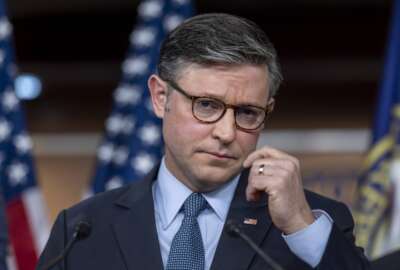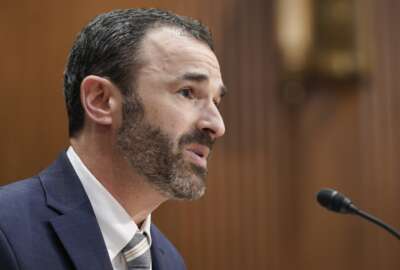Kansas City GSA office finds telework success
The DorobekINSIDER asked about telework lessons learned from GSA\'s Mike Brinks, Regional Commissioner of the Federal Acquisition Service in Kansas City, Missouri;...
wfedstaff | June 3, 2015 4:09 pm
The General Services Administration has been a government leader in telework, pointing to better productivity, work-life balance and impact to the environment. Technology is making workers more mobile (and telework centers obsolete – listen to Jason Miller’s interview above.)
As interest and ability to telework increase, one GSA regional office in Kansas City, Missouri shows other agencies how a telework program can be executed successfully.
All 300 employees of the Kansas City office telework at least one day a week, and 45 employees, as part of a pilot program, telework five days a week. People in the pilot program have told GSA Regional Commissioner of Federal Acquisition Service Michael Brinks that they are sleeping more, exercising more, seeing their families more and feeling less stressed.
“All of that translates into a happy employee, and when you have a happy employee I believe you have a productive employee,” Brinks said in an interview with the DorobekINSIDER.
The performance measurements support Brinks belief that his employees are more productive. Workers are spending less time to accomplish tasks, said Ellen Upchurch, GSA’s supervisory contract specialist with the Centers for Facilities, Maintainance and Hardware, in an interview with the DorobekINSIDER.
“Before, we took 80 days on an offer; now it’s as low as 50 days and no more than 68, 69,” Upchurch said.
Workers are also taking less sick leave, she said.
The Kansas City office incorporated the agency’s “higher goals” into the telework program, such as strengthening continuity of operations, retaining a “world-class” workforce, and eliminating the office’s environmental footprint, Brinks said. According to Federal Times, the Kansas City office estimates it reduced carbon dioxide emissions by 37.5 metric tons because of the increased teleworking.
Upchurch admitted that at first she was skeptical of the telework program.
“It bothered me to know I would not longer be able to see (my employees) on a day-to-day kind of scenario,” Upchurch said. However, she admitted, “I was very wrong.”
In fact, Upchurch said her one-on-one interaction with employees has actually increased.
Through the use of collaboration tools, employees can meet online, even sharing screens so they can view the same documents, Upchurch said.
The social aspect of working in an office is also preserved online with another website for “watercooler talk,” Upchurch said. This is where employees can share recipes and talk about the latest episode of “Dancing With the Stars,” she said.
Brinks said managers who want to implement telework must do a lot of upfront planning. Supervisors must address how they will keep employees engaged and how they will objectively measure goals, he said.
Once the program is in place, “You need to vigorously manage telework as if it were a program,” Brinks said.
Copyright © 2025 Federal News Network. All rights reserved. This website is not intended for users located within the European Economic Area.





